Guitar and Ukulele Soundboards
Redwood
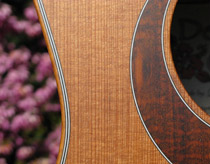
Tonally, Redwood compares to Cedar but possesses more of the qualities associated with Spruce - so expect a bolder, crisper, punchier tone than Cedar, but with all the rich, strong overtones intact. These tops are much stiffer than you might expect for Redwood.
Cedar guitar and Ukulele tops
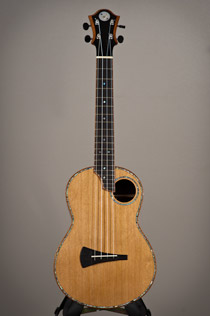
Cedars, as a vibrating material, sometimes have a better stiffness-to-weight ratio than spruces. Accordingly, the sound these can make is more quick and loud and, because it is so immediate, brighter and sharper than a spruce sound -- but without the European spruce overtone component. Because of its inner structure cedar is also a somewhat weaker wood than spruce, and it is more subject to cracking and fracturing. I recommend being a bit more careful in the care and handling of a cedar top guitar than a spruce one. These are also rules of thumb, with many exceptions.
Koa Tops
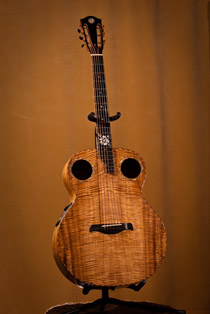
Koa tops for use with a koa back and side for - you guessed it - an all koa guitar or ukulele! koa topped instruments have been around since the late 1800's but are gaining favor again, especially among country blues fingerpickers. Tonally, these instruments have tremendous longevity, improving with age. They never become sloppy sounding. They are prized for their clear, strong fundamental, full trebles, a punchy envelope and they are often described as "woody" sounding.
Bearclaw Spruce
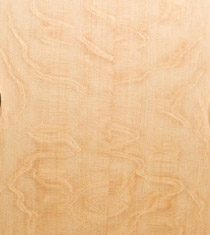
There are two basic kinds of bearclaw. The most common looks as if the wood were scratched, with long, squiggling "claw marks". The marks often run perpendicular to the grain. The second type shows shorter "striations", where the "claw marks" run in the general direction of the grain, are thinner and more numerous than the first type resulting in a fantastic shimmer.
Spruce Guitar and Ukulele Tops
Engelmann Spruce
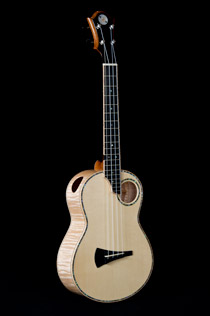
In the last few years Engelmann Spruce has grown in popularity. Many better known makers now use Engelmann in lieu of German Spruce since good Engelmann has many of the traits desirable in a good German top and it is more economical. In appearance it is like German Spruce, but unlike German Spruce, it seems to be more uniform in consistency. The tops are often more homogeneous looking with the early and late-growth rings being less distinct than those of Sitka. Like German Spruce, Engelmann has a beautiful ivory sheen and occasionally shows some pink streaking. It is also similar to German Spruce in workability. Most of our Engelmann Spruce comes from Canada, and we believe it has some advantages over the Engelmann from the States. It's stiffer than Sitka Spruce perpendicular to the grain.
Sitka Spruce
Preferred for its strength and tough elasticity, Sitka Spruce can endure abuse to which the other soundboard materials are less immune, like dirt specks on the workbench and roughshod handling by the player.
Sitka Spruce is very stiff. Because of its strength and toughness it is well suited for steel string acoustic guitars. It has even been used successfully for classical guitars. The color of Sitka Spruce ranges from white to pinkish to light brown. Some tops display a lot of color variation.
German Spruce
German Spruce is a common term for Spruce coming from Europe, but it is not really accurate. Guitar grade Spruce has not come out of Germany for many years now. The best material comes from the former Yugoslavia region. When you order German Spruce from LMI, you can expect the excellent, slightly golden-colored tonewood that, for years now, has been the staple of the bowed instrument world, and a favorite among high-end steel string and classical guitar builders. We carry the finest European Spruce available.
Carpathian Spruce
Carpathian/Ukrainian Spruce is from the Caucasus and Carpathian mountains that surround the Black sea. This wood has a very creamy, white appearance but with slightly wider grain than the other European Spruces. These tops are quite stiff and offer a slightly brighter, glassier tap tone than the other European Spruces. Many have compared it to Adirondack Spruce and some even call it 'Carpathian Red Spruce'.
